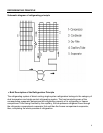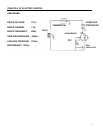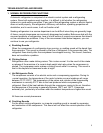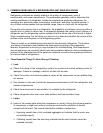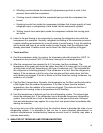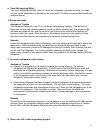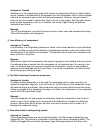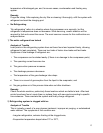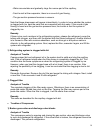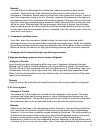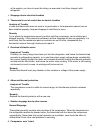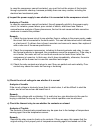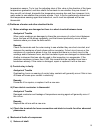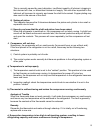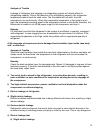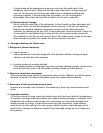15
Remedy
It is quite difficult to differentiate this trouble from others because they have similar
symptoms. When repairing, listen attentively for abnormal sounds coming from the
compressor. Oftentimes, broken pieces of valve block strike against the cylinder. Check to
see if the compressor casing is too hot. Secondly, measure the pressures at the high and
low-pressure ports of the compressor with pressure gauges. If the gas suction valve block
is broken, the suction pressure gauge pointer will swing violently and the suction pressure
will be very high. Whereas when the gas discharge valve block is broken, the discharge
pressure gauge pointer will swing drastically and the discharge pressure will be very high.
In both cases, stop the compressor at once. If possible, open the cylinder cover, check the
valve block, and repair it.
Compressor suddenly stops
Very often, when the compressor suddenly stops, the gas suction pressure and/or
discharge pressure have exceeded their respective prescribed ranges. When this happens,
the pressure-operated protective relay automatically shuts off the power to the compressor.
Below we discuss the reasons for high gas discharge pressure and low suction pressure.
Stoppage due to excessively high gas discharge pressure
1) High gas discharge pressure due to excess refrigerant
Analysis of Trouble
Loose frosting and poor refrigerating effect may occur if excessive refrigerant has been
charged into the system. Excess refrigerant will occupy additional space in the evaporator.
This will reduce its heat dissipating area, and the phenomenon of “liquid striking” may occur.
Condensation may occur on the gas return tube, and the gas discharge pressure will rise.
When it reaches the threshold value, the protective relay will actuate and shut off the power
supply to the compressor.
Remedy
Open the tubing. Re-evacuate and charge the system with a proper quantity of refrigerant.
2) Air in the system
Analysis of Trouble
The residual air in the system will circulate with the refrigerant in the system. The major
symptoms are higher gas discharge pressure, higher discharged gas temperature, and
poor refrigerating effect. The gas discharge pressure will exceed its maximum value when
the compressor has run for an extended period, and activates the protective relay.
Remedy
Check the air has been in the refrigerating system. Generally, there are three possibilities.
First, is that the air has been sucked into the system during repairs due to carelessness.
Secondly, it has not been completely purged evacuating the system. The third possibility is
that there are leak points at the low-pressure end of the refrigerating system. Leak points
appear in low temperature parts or assemblies. This is because the evaporation
temperature is lower for such low temperature devices, especially at the low-pressure end;
it is easier for the air to go into the system. Once it has been ascertained that air does exist



